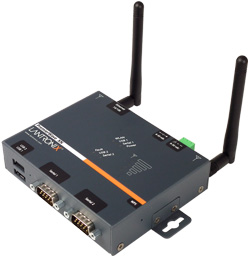Navigating and Selecting within a Table
Because table cells usually require unique information and/or formatting, a good understanding of Word's cell navigation and selection options can save time and prevent frustration when working with tables. And while you can navigate and select with either your mouse or your keyboard, most users prefer one method over the other. Accordingly, this document discusses all navigation and selection options while focusing on time-saving keyboard combinations.
Using the Tab Key for Alignment
Within a table, the [Tab] key is used to move between cells, rather than for its traditional function of inserting tabs.To use the [Tab] key for alignment within a table cell:
- Set the tab
For information on how to set tabs, refer to Setting Tabs. - Place the insertion point within the cell that contains the tab stop
- Press [Ctrl] + [Tab]
Navigating within a Table Using Keys
You can use the keyboard to navigate through your table. The following table illustrates these keyboard shortcuts and their functions.| To Move to... | Press... |
|---|---|
| Next cell | [Tab] OR [Right Arrow] |
| Previous cell | [Shift] + [Tab] OR [Left Arrow] |
| Next row | [Down Arrow] |
| Previous row | [Up Arrow] |
| Add a tab for alignment within a cell | [Ctrl] + [Tab] |
| First cell in a row | Macintosh: [Ctrl] + [Home] Windows: [Alt] + [Home] |
| Last cell in a row | Macintosh: [Ctrl] + [End] Windows: [Alt] + [End] |
| First cell in a column | Macintosh: [Ctrl] + [Page Up] Windows: [Alt] + [Page Up] |
| Last cell in a column | Macintosh: [Ctrl] + [Page Down] Windows: [Alt] + [Page Down] |
Selecting within a Table
You can use the keyboard and mouse to select cells and data in your table.| To Select... | Steps |
|---|---|
| Data in next cell | [Tab] NOTE: There must be data (e.g., text) in the cell for this option to work; if the cell is empty the [Tab] key only moves to the cell without selecting it. |
| Data in previous cell | [Shift] + [Tab] NOTE: There must be data (e.g., text) in the cell for this option to work; if the cell is empty the [Tab] key only moves to the cell without selecting it. |
| Entire row | Click and drag your mouse across the row OR Hold your mouse at the left of the row; when an arrow |
| Entire column | Click and drag your mouse down the column OR Hold your mouse at the top of the column; when a down arrow |
| Entire table | With the number lock off, press [Alt] + [5] NOTE: The [5] must be pressed from the 10-key pad. |
| Multiple contiguous cells, rows, or columns | Click and drag your mouse across the cells |
| Multiple non-contiguous cells, rows, or columns | Windows: Make your first selection; then press [Ctrl] + click and drag across additional cells, rows, or columns Macintosh: Make your first selection; then press [Cmd] + click and drag across additional cells, rows, or columns |
| To Select... | Steps |
|---|
| Entire table | With the number lock off, press [Alt] + [5] NOTE: The [5] must be pressed from the 10-key pad. |
| Multiple non-contiguous cells, rows, or columns | Make your first selection; then press [Ctrl] + click and drag across additional cells, rows, or columns Make sure to let me know in the comments below or on our Facebook page how you've got with it or Do you have any questions |

No comments:
Post a Comment